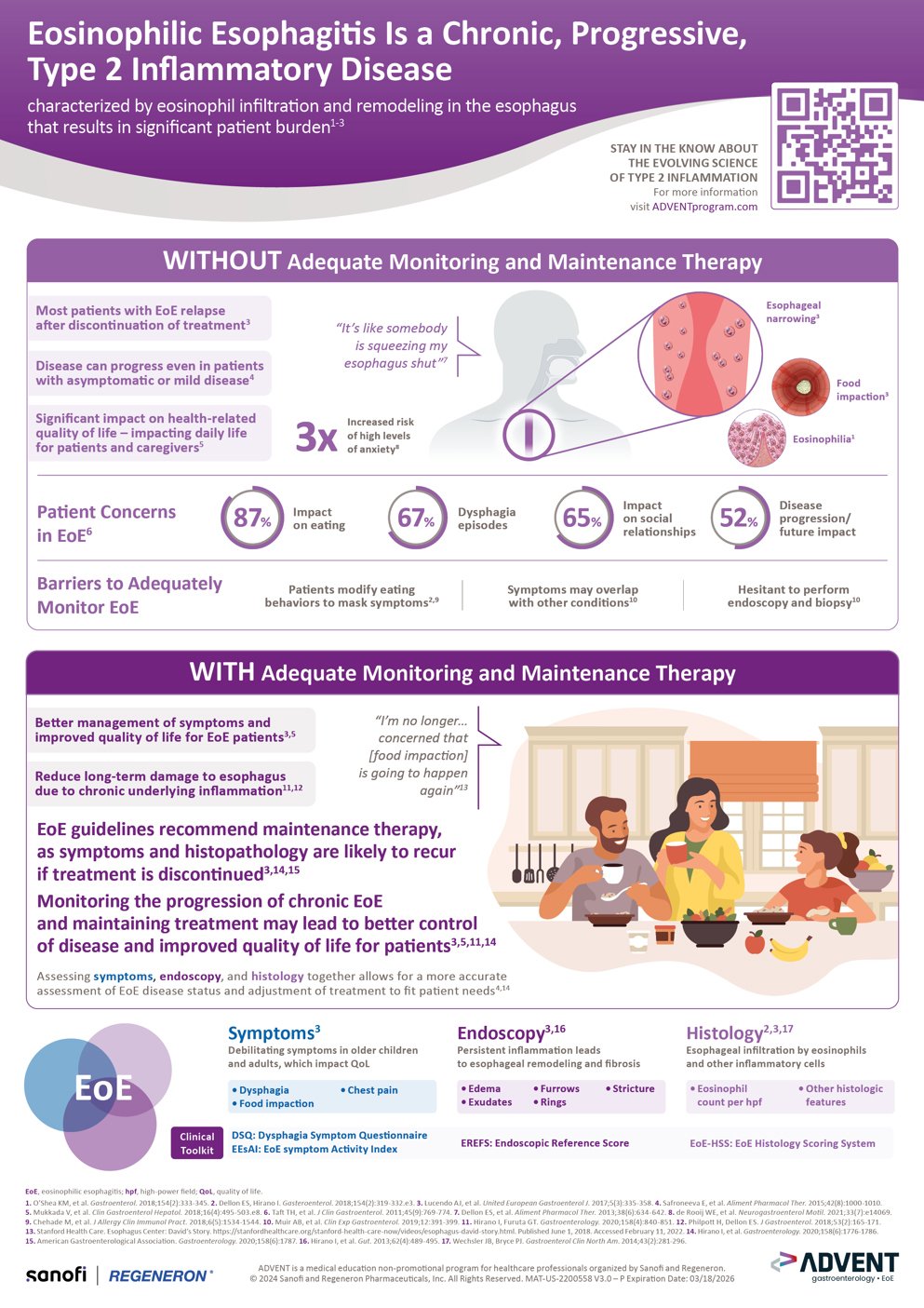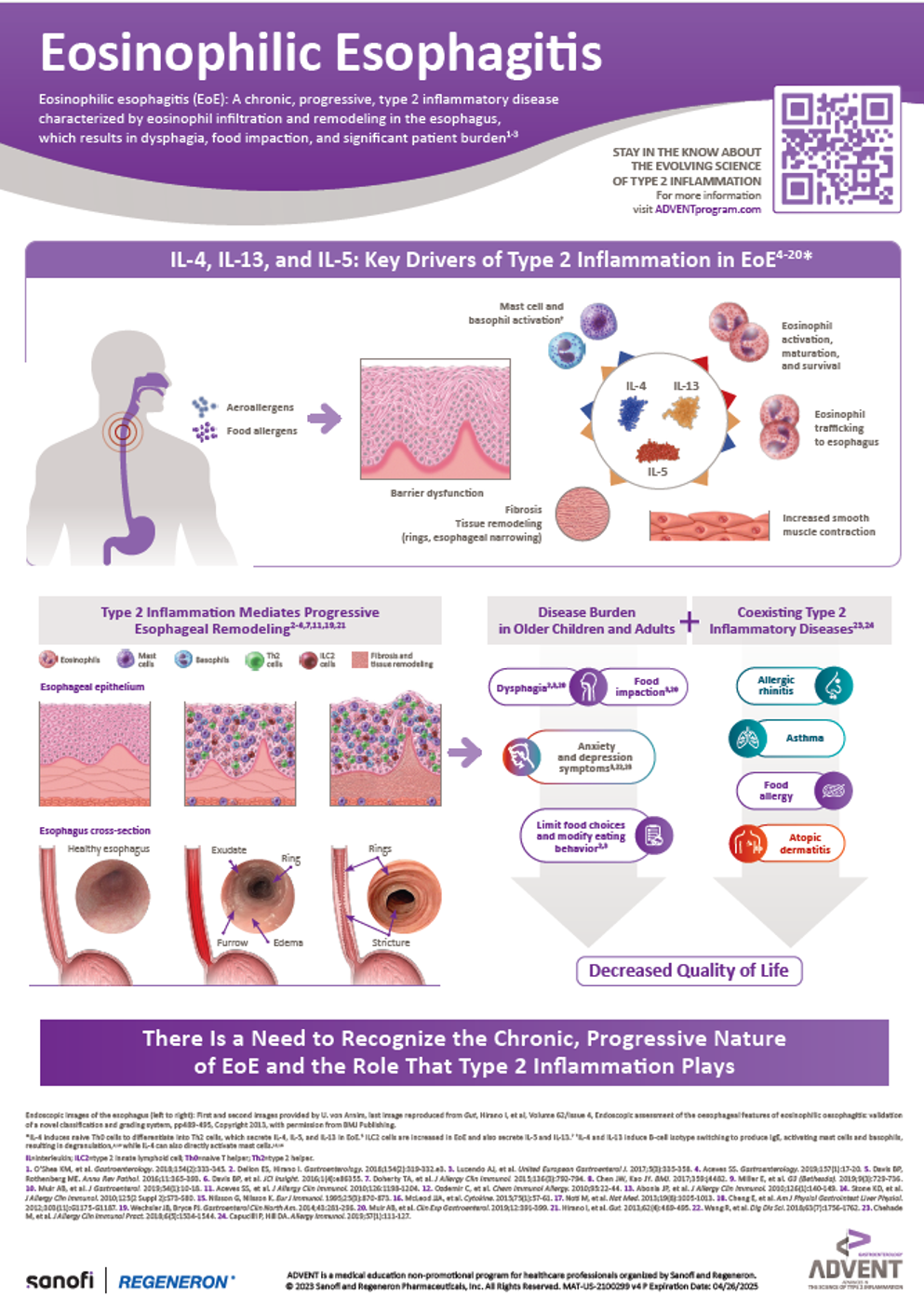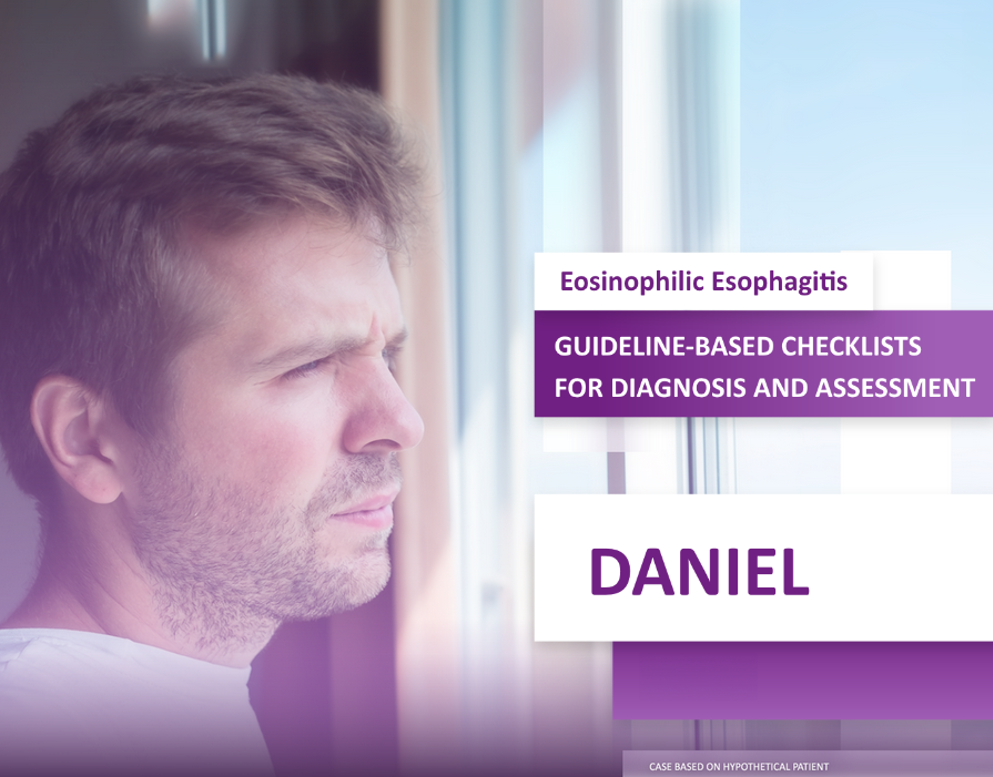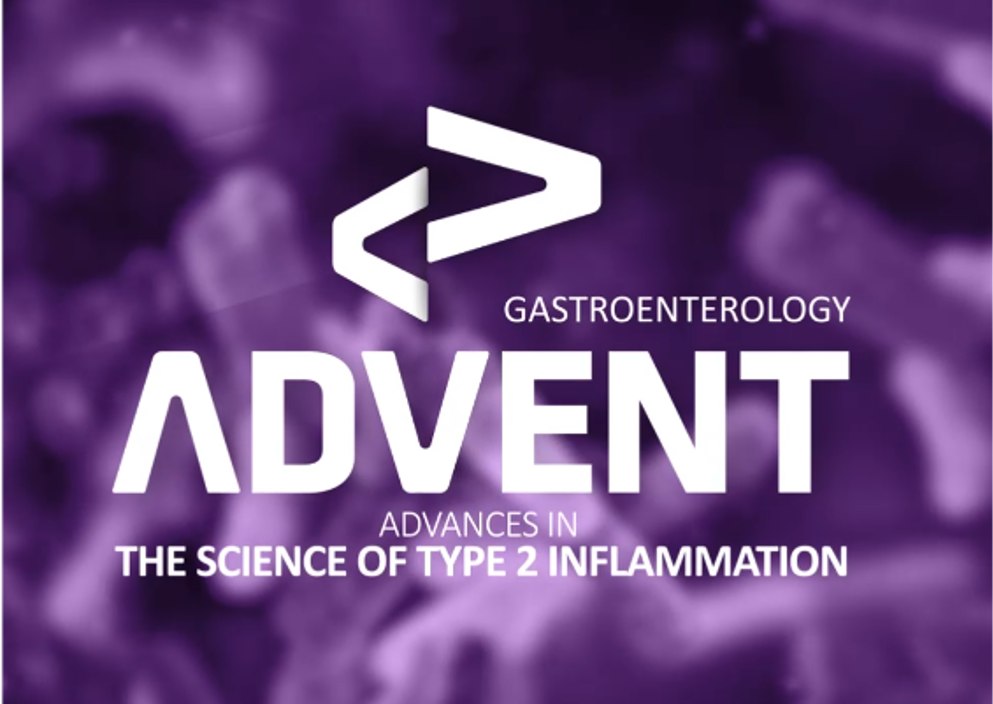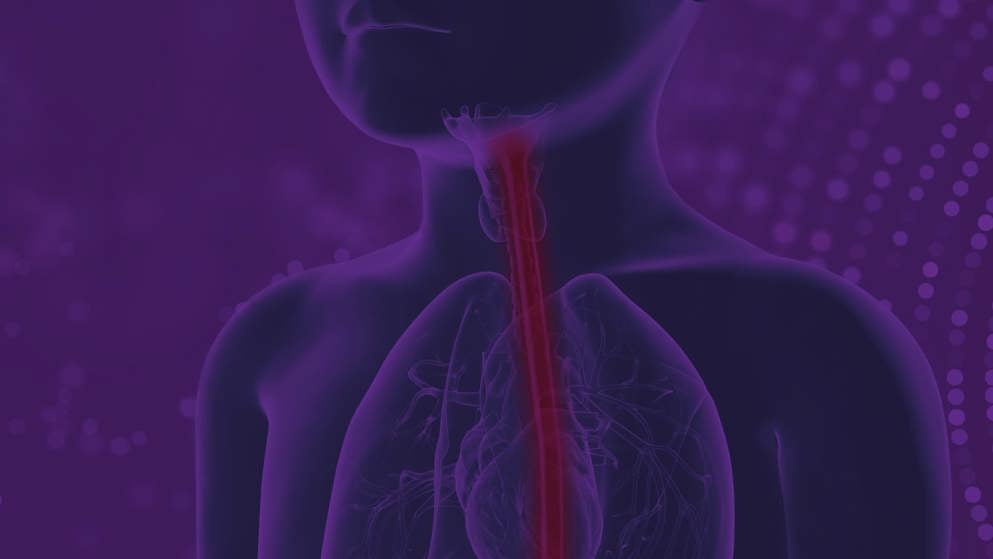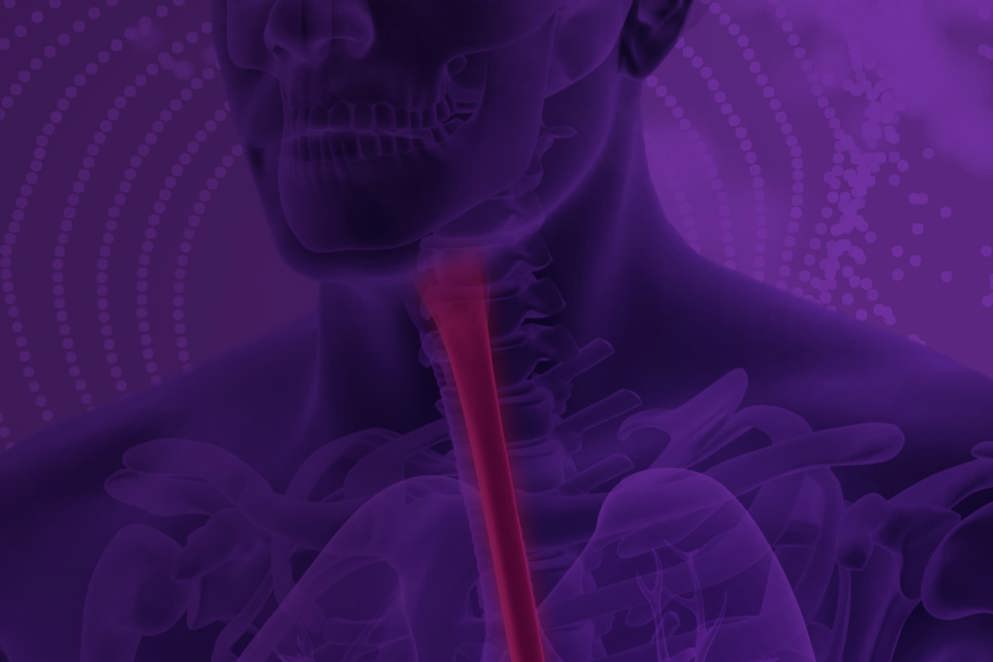
Adult Eosinophilic Esophagitis
Eosinophilic esophagitis is a chronic, progressive disease primarily driven by type 2 inflammation and characterized by remodeling in the esophagus, dysphagia, food impaction, and/or significant patient burden1-3
Burden of Disease
The global prevalence of EoE is estimated to be 50-100 per 100,000 people. The growing global prevalence of EoE and the burden that patients experience highlights the increased need for awareness and identification of patients with EoE.1,2
Patient Burden in Eosinophilic Esophagitis
Watch this short video to learn about the burden patients with eosinophilic esophagitis experience, including physiological, psychiatric, and social impact on quality of life.
Symptoms of EoE Impact Quality of Life for Patients
Dysphagia and food impaction negatively impact quality of life and patients with EoE may develop compensatory eating behaviors to cope. Compensatory eating behavior leads to delay in seeking medical attention and proper diagnosis of EoE. Symptoms of EoE impact patients differently depending on patient age and the progression of disease (FIGURE 1).1,3-7
FIGURE 1. Impacts of EoE on Patient Quality of Life.1,3-7
*Responses from semi-structured interviews with adults diagnosed with EoE.
EoE, eosinophilic esophagitis; QoL, quality of life.
Eosinophilic Esophagitis: Monitoring and Maintenance Infographic
Learn about patient concerns and barriers to monitoring disease in patients with EoE and the benefits of adequate monitoring and effective maintenance therapy on disease control and the impact on the patient’s burden and quality of life.
Coexisting Type 2 Diseases Add to Patient Burden
Type 2 inflammatory diseases commonly coexist in patients with EoE. Atopic comorbidities (asthma, atopic dermatitis, food allergy) should increase clinical suspicion of EoE (FIGURE 2).2,4,8-10
FIGURE 2. Prevalence of Coexisting Type 2 Inflammatory Diseases in EoE Patients.2,4,8-10
EoE, eosinophilic esophagitis.
Pathophysiology
Type 2 inflammation underlies the esophageal dysfunction, barrier disruption, and disease progression behind the signs and symptoms of eosinophilic esophagitis.5,10-29
Eosinophilic Esophagitis: Understanding the Pathophysiology of Type 2 Inflammation and Disease Burden
Watch this short video to learn about the pathophysiology of eosinophilic esophagitis, the various cell types involved, and the role of type 2 inflammation in this chronic, progressive disease.
Type 2 Inflammation in EoE
Underlying type 2 inflammation is the main driver of EoE pathophysiology (FIGURE 3).11-29
FIGURE 3. IL-4 and IL-13 Are Key and Central Drivers of Type 2 Inflammation That Mediate Pathophysiology of EoE.11-29
EoE, eosinophilic esophagitis; IL, interleukin; Th2, T helper type 2.
Eosinophilic Esophagitis: A Chronic, Progressive, Type 2 Inflammatory Disease Infographic
Learn about the key drivers of type 2 inflammation in EoE and how it mediates the progressive esophageal remodeling associated with significant patient burden in this disease.
Download: EoE: A Chronic, Progressive, Type 2 Inflammatory Disease Infographic
More Than Eosinophils: Taking a Closer Look at the Pathophysiology of EoE
Join Prof. Kathryn Peterson for an expert review on how different immune cells and inflammatory mediators contribute to the pathogenesis of eosinophilic esophagitis, a chronic, progressive, type 2 inflammatory disease. Prof. Peterson explores the role of type 2 inflammation in barrier dysfunction and looks beyond eosinophil count in assessing EoE disease progression.
Pathophysiology and Progressive Remodeling of the Esophagus
Persistent type 2 inflammation results in progressive remodeling and fibrosis when EoE is left untreated
(FIGURE 4).1,5,13,17,27,30,31
FIGURE 4. Inflammatory and Fibrostenotic Progression of EoE Over Time.1,5,13,17,27,30,31
*Endoscopic images of the esophagus (left to right): First and second provided by U. von Arnim, last image from Hirano I, et al.31
Reproduced from Hirano I, et al.31 with permission from BMJ Publishing.
EoE, eosinophilic esophagitis; ILC2, type 2 innate lymphoid cell; Th2, T helper type 2.
Identification and Diagnosis
Early identification of EoE is vital, as delayed diagnosis in EoE is associated with increased risk of esophageal remodeling and reduced quality of life.5,30
EoE diagnosis requires a comprehensive assessment of clinical symptoms, histologic and endoscopic findings, and exclusion of non-EoE disorders (FIGURE 5).5,10
FIGURE 5. Diagnostic Algorithm for EoE.5,10
*Esophagogastroduodenoscopy (EGD).
†Non-EoE disorders that cause or potentially contribute to esophageal eosinophilia include hypereosinophilic syndrome, non-EoE eosinophilic gastrointestinal disorders, GERD, achalasia, Crohn’s disease, infections, connective tissue disorders, and drug hypersensitivity reactions.10
AGREE, A Working Group on PPI-REE; EoE, eosinophilic esophagitis; GERD, gastroesophageal reflux disease; PPI, proton-pump inhibitor; PPI-REE, PPI-responsive esophageal eosinophilia.
EoE Interactive Patient Case
Meet Daniel and journey through this hypothetical patient case to learn about guideline-based checklists for EoE diagnosis, and criteria for assessing response to EoE treatment.
Not an actual patient.
Endoscopic and Histologic Attributes of EoE
EoE diagnosis is facilitated by endoscopic findings and confirmed with histologic evaluation of multiple biopsies (FIGURE 6,7).5,10,31-33
FIGURE 6. Endoscopic Findings in EoE.5,10,31-33
Reproduced from Hirano I, et al.31 with permission from BMJ Publishing.
EoE-HSS is more strongly associated with disease status in EoE than peak eosinophil count alone (FIGURE 7).34
FIGURE 7. Histological Findings in EoE.34
Reprinted from Collins MH, et al.34 with permission from Oxford University Press.
EoE, eosinophilic esophagitis; eos/hpf, eosinophils per high-power field.
Clinical Management
Discussing individual therapy choices with the patient can lead to optimal outcomes, and maintenance therapy avoids relapse of disease due to chronic, progressive nature of EoE.5,35
Guidelines From European and American Medical Societies for the Treatment of EoE
Treating EoE can involve dietary intervention, PPIs, STCs, or other options such as biologics (FIGURE 8, FIGURE 9); treatment guidelines and approval status for therapeutics may vary by region.5,35,36
FIGURE 8. UEG/EAACI/ESPGHAN/EUREOS Treatment Guidelines for EoE (European Guidelines).5,35
Republished from Lucendo AJ, et al.5 with permission from Elsevier.
*In patients with persistent symptoms under anti-inflammatory therapy, endoscopic dilation should be considered.5
†Refer the patient to an EoE center.5
EAACI, European Academy of Allergy and Clinical Immunology; EoE, eosinophilic esophagitis; ESPGHAN, European Society of Pediatric Gastroenterology, Hepatology and Nutrition; EUREOS, European Society of Eosinophilic Oesophagitis; PPI, proton pump inhibitor; STC, swallowed topical corticosteroid; UEG, United European Gastroenterology.
FIGURE 9. AGA/JTF Clinical Guidelines for EoE (USA Guidelines).35,36
Reprinted from American Gastroenterological Association.36 with permission from Elsevier.
AGA, American Gastroenterological Association; EoE, eosinophilic esophagitis; JTF, Joint Task Force on Allergy-Immunology Practice Parameters; PPIs, proton pump inhibitors.
With any treatment, the ideal is for a patient to show symptom resolution, healthy esophageal biopsies, and normal endoscopic findings (FIGURE 10).6,31,37
FIGURE 10. EoE Treatment Response Framework.6,31,37
EEsAI, EoE Symptom Activity Index (score range: 0 to 100, higher score indicates more active EoE6); EoE, eosinophilic esophagitis; eos/hpf, eosinophils per high-power field; EREFS, Endoscopic Reference Score (total score range: 0 to 9, higher score indicates more severe endoscopic findings31).
The Importance of Maintenance Therapy for EoE
Maintenance therapy is necessary to avoid progression of disease in EoE patients (FIGURE 11).5,38-43
FIGURE 11. Key Takeaways Supporting the Need for Maintenance Therapy.5,38-43
EoE, eosinophilic esophagitis; TCS, topical corticosteroids.
2021: EoE Year In Review
Watch this video to learn more about the key scientific advances of 2021 EoE pathophysiology and therapeutics. Drs. Bredenoord and Dellon review key scientific advances in EoE from major gastroenterology congresses and peer-reviewed publications in 2021, then discuss the clinical implications of these advances for practicing clinicians in EoE.
ADVENTprogram.com
Learn more about type 2 inflammation
References
- Dellon ES, Hirano I. Gastroenterology. 2018;154(2):319-332.e3.
- Dellon ES, et al. Clin Gastroenterol Hepatol. 2014;12(4):589-596.e1.
- Taft TH, et al. J Clin Gastroenterol. 2011;45(9):769-774.
- Chehade M, et al. J Allergy Clin Immunol Pract. 2018;6(5):1534-1544.e5.
- Lucendo AJ, et al. United European Gastroenterol J. 2017;5(3):335-358
- Safroneeva E, et al. Aliment Pharmacol Ther. 2015;42(8):1000-1010.
- Hewett R, et al. Dis Esophagus. 2017;30(1):1-7.
- Prasad GA, et al. Clin Gastroenterol Hepatol. 2009;7(10):1055-1061.
- Hruz P, et al. J Allergy Clin Immunol. 2011;128(6):1349-1350.e5.
- Dellon ES, et al. Gastroenterology. 2018;155(4):1022-1033
- Davis BP, Rothenberg ME. Annu Rev Pathol. 2016;11:365-393.
- Davis BP, et al. JCI Insight. 2016;1(4):e86355.
- Doherty TA, et al. J Allergy Clin Immunol. 2015;136(3):792-794.
- Chen JW, Kao JY. BMJ. 2017;359:j4482.
- Miller E, et al. G3 (Bethesda). 2019;9(3):729-736.
- Muir AB, et al. J Gastroenterol. 2019;54(1):10-18.
- Aceves SS, et al. J Allergy Clin Immunol. 2010;126(6):1198-1204.e4.
- Ozdemir C, et al. Chem Immunol Allergy. 2010;95:22-44.
- Cocks BJ, et al. Int Immunol. 1993;5(6):657-663.
- Abonia JP, et al. J Allergy Clin Immunol. 2010;126(1):140-149.
- Stone KD, et al. J Allergy Clin Immunol. 2010;125(2 suppl 2):S73-S80.
- Nilsson G, Nilsson K. Eur J Immunol. 1995;25(3):870-873.
- McLeod JJ, et al. Cytokine. 2015;75(1):57-61.
- Noti M, et al. Nat Med. 2013;19(8):1005-1013.
- Cheng E, et al. Am J Physiol Gastrointest Liver Physiol. 2012;303(11):G1175-G1187.
- Aceves SS. Gastroenterology. 2019;157(1):17-20.
- Wechsler JB, Bryce PJ. Gastroenterol Clin North Am. 2014;43(2):281-296.
- Aceves SS. Dig Dis. 2014;32(1-2):15-21.
- Le Floc’h A, et al. Allergy. 2020;75(5):1188-1204.
- Nhu QM, Aceves SS. Front Med (Lausanne). 2017;4:128.
- Hirano I, et al. Gut. 2013;62(4):489-495.
- Hirano I. Dig Dis. 2014;32(1-2):78-83.
- Schoepfer AM, et al. Gastroenterology. 2013;145(6):1230-1236.
- Collins MH, et al. Dis Esophagus. 2017;30(3):1-8.
- Hirano I, et al. Gastroenterology. 2020;158(6);1776-1786.
- American Gastroenterological Association. Gastroenterology. 2020;158(6):1787.
- Dellon ES, Gupta SK. Clin Gastroenterol Hepatol. 2019;17(11):2149-2160.
- Dellon ES, et al. Gastroenterology. 2022;163(1):59-76.
- Aceves SS, et al. Gastrointest Endosc. 2022;96(4):576-592.e1.
- Arnim UV, et al. Clin Gastroenterol Hepatol. 2023;21(10):2526-2533.
- Biedermann L, et al. Nat Rev Gastroenterol Hepatol. 2023;20(2):101-119.
- Aceves SS, et al. Ann Allergy Asthma Immunol. 2023;130(3):371-378.
- Ishibashi F, et al. JGH Open. 2019;4(3):422-428.
of interest
are looking at
saved
next event
Developed by EPG Health for Medthority in collaboration with Sanofi and Regeneron, with content provided by Sanofi and Regeneron.
ADVENT is a medical education non-promotional program for healthcare professionals organized by Sanofi and Regeneron. This website is intended only for duly authenticated healthcare professionals.
© 2024 Sanofi and Regeneron Pharmaceuticals, Inc. All Rights Reserved.
MAT-US-2209565 v2.0 - P Expiration Date: 01/17/2025
Sanofi and Regeneron are committed to providing resources to advance knowledge in areas of unmet medical need among patients with inflammatory and immunologic diseases.

